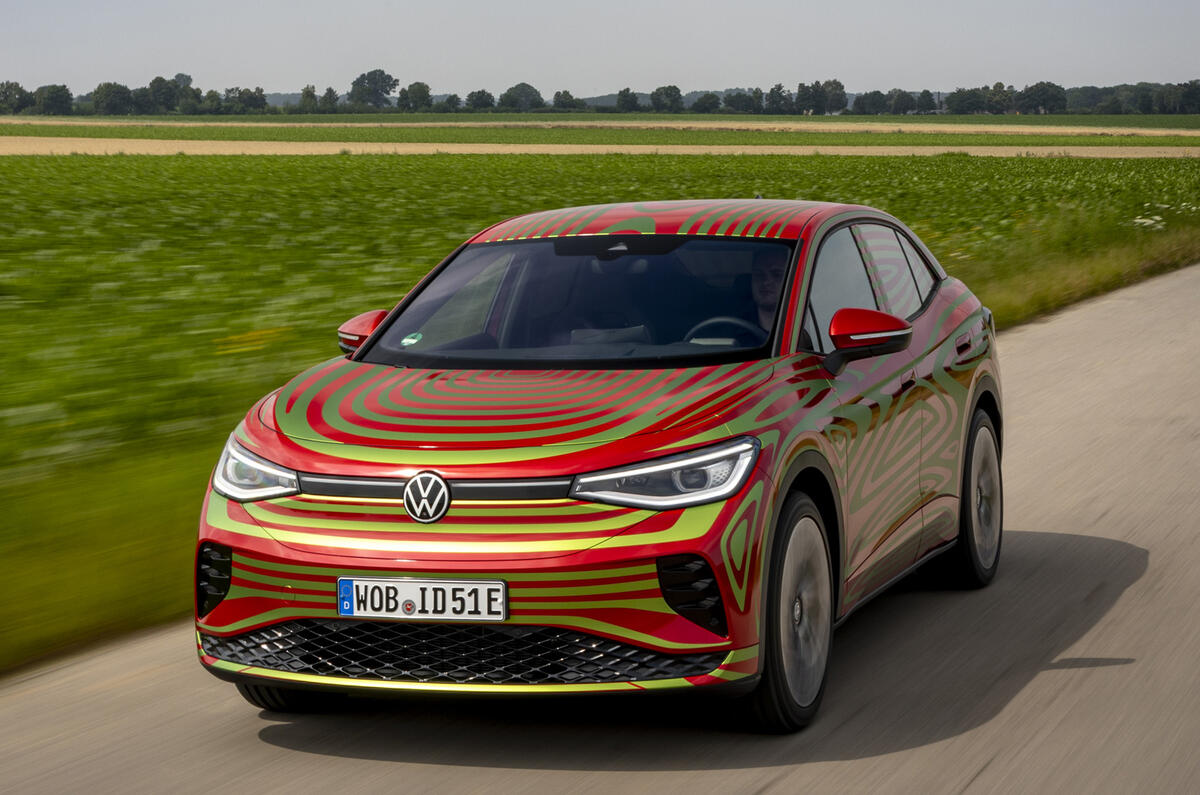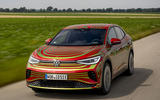The pace of Volkswagen’s electric vehicle push continues to gain momentum, as evidenced by the new ID 5.
This SUV-coupé arrives hot on the heels of the ID 3 family hatchback and the ID 4 SUV, on which it’s largely based. It’s a sister car to the Audi Q4 E-tron Sportback and Skoda Enyaq iV, alongside which it will be produced at Volkswagen’s dedicated EV factory in Zwickau, Germany, from early 2022.
Currently in the final stages of development, the third bespoke EV from Volkswagen was by all accounts set to be called the ID 4 Coupé. But in a move aimed at providing it with a higher perceived positioning than its slightly more versatile sibling, officials ultimately decided that it should take the ID 5 name instead.
Make of this what you will, but there’s no denying the links between the ID 4 and the ID 5. Even with the eye-catching disguise of the prototypes we drove, the similarities in front-end styling are clear. Apart from a uniquely styled bumper, the differences are negligible through to the B-pillars.

It’s at the rear where the ID 5 is distinguished in appearance, with a more heavily curved roofline, an angled, liftback-style tailgate and an integrated rear spoiler helping to provide it with a more eye-catching form than the ID 4. The standard wheels are 19in, although buyers will be able to choose optional 20in and 21in items.
The ID 5 uses the same electric drivelines as the ID 4. Included are 168bhp and 201bhp single-motor, rear-wheel-drive variants, as well as the more overtly sporting 295bhp dual-motor, four-wheel-drive GTX flagship, a prototype of which we’re driving here.
All three variants come with a 77kWh lithium ion battery pack. This represents a departure from the ID 4, which offers the choice of either a 52kWh or 77kWh battery. The maximum range of the entry-level ID 5 is put at 309 miles on the WLTP test procedure.
The ID 5 can charge at rates of up to 11kW from an AC device. And while Volkswagen is yet to confirm this, Autocar understands that DC charging capacity will be increased from the 125kW offered by the ID 4 to 150kW, in combination with a software upgrade that’s set to go into commission before the ID 5 reaches UK showrooms. This suggest an 80% replenishment in only around half an hour from a high-powered charger.











































Join the debate
Add your comment
Confusing because each opinion is qualified - steering, engagement. So is it good to drive, or not?
From everything I've read so far, VW's ID cars drive well and are thoughtfully designed and enegineered. It's a shame then that they are so mind-numbingly dull-looking. They look like generic cars photoshopped for an auto insurance advert. The camo graphics should be offered as it's the only visually interesting aspect of this boring bar of soap on wheels.
I'd sooner get a slower cheaper Tesla Model 3 than this pointless turd.